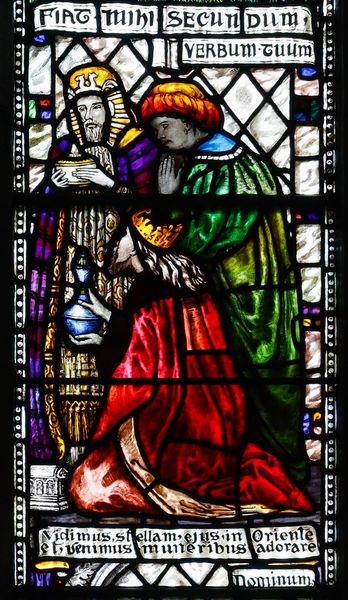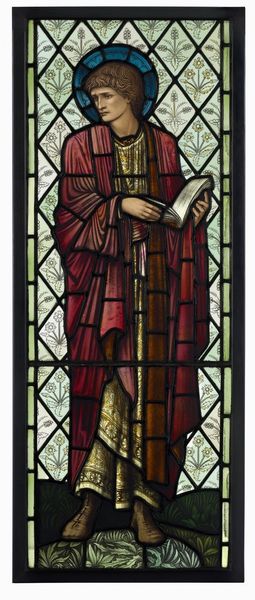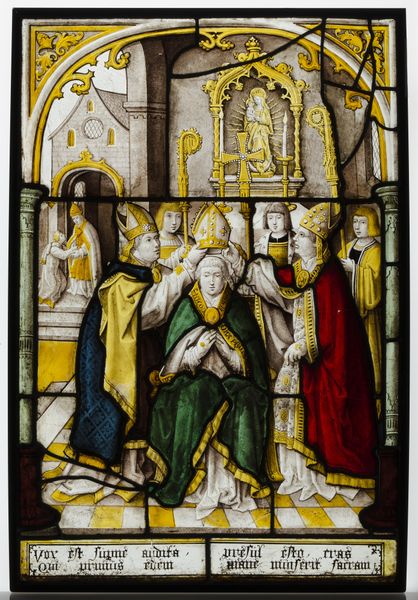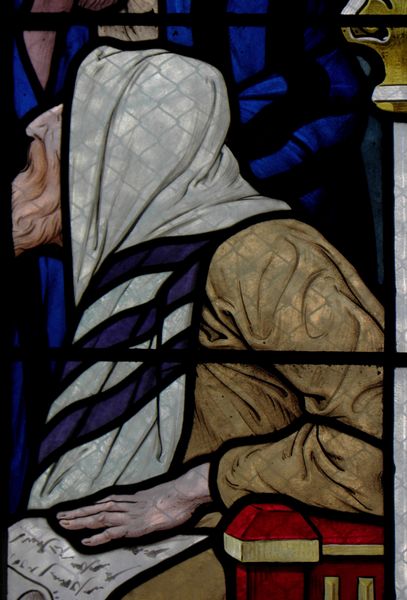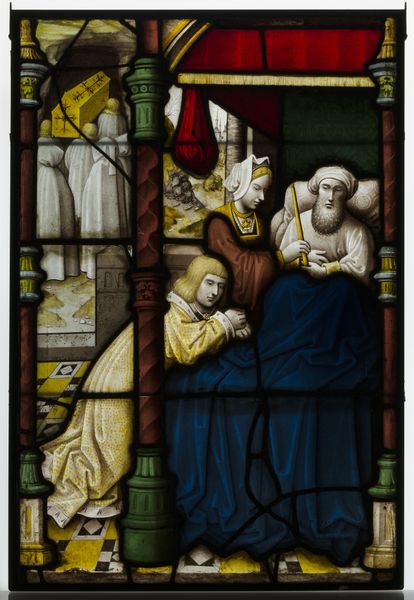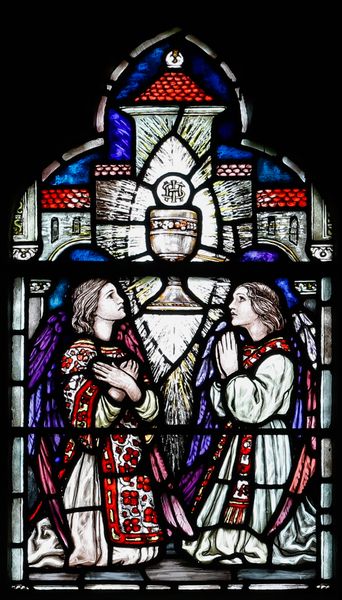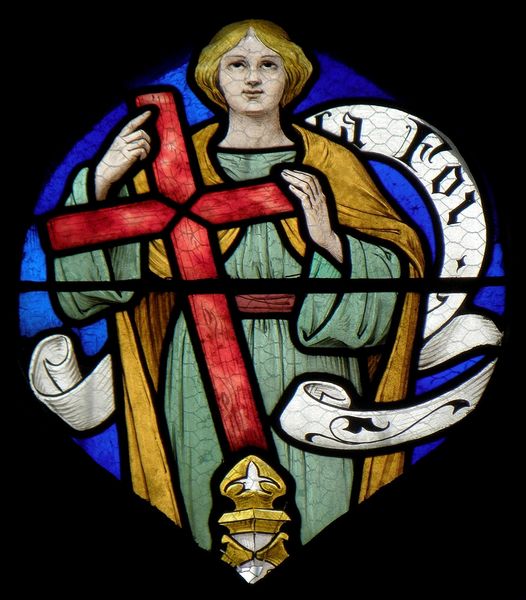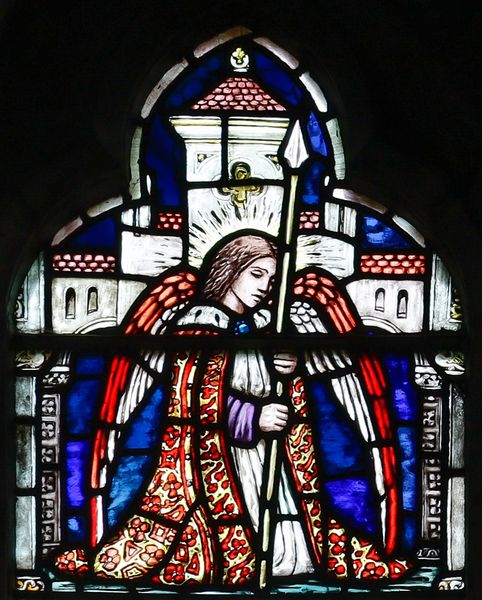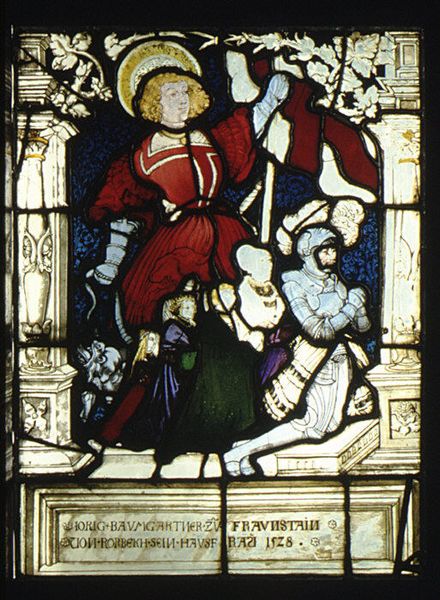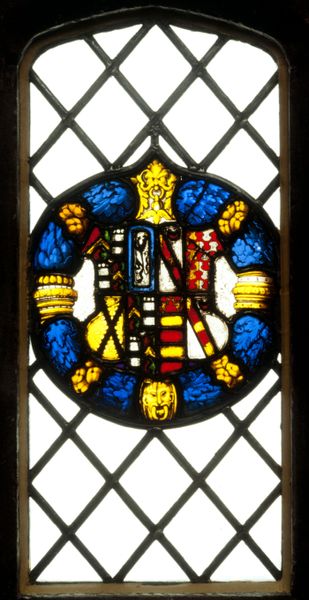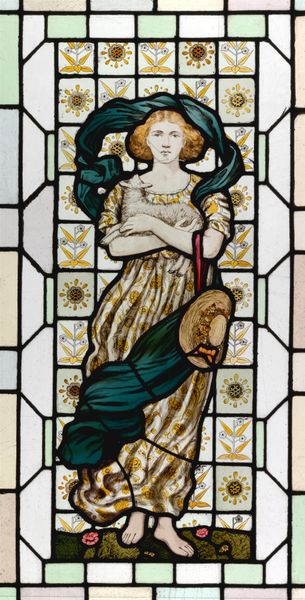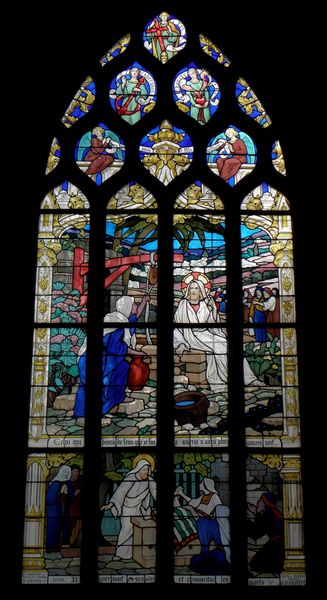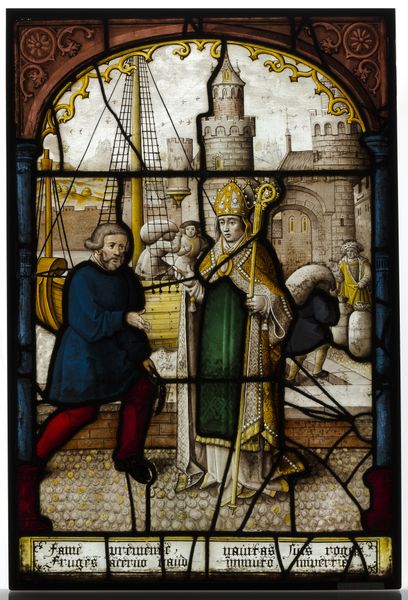
glass
#
portrait
#
medieval
#
figuration
#
glass
#
history-painting
Dimensions: height 110 cm, width 56 cm
Copyright: Rijks Museum: Open Domain
Curator: Here we have a stunning example of early 16th-century portraiture in glass, attributed to Nicolaes Rombouts. It depicts Engelbert II of Nassau, dating from around 1500 to 1525. Editor: Immediately, I'm struck by the conflicting messages: he’s kneeling in prayer, a posture of humility, yet his armor screams power and dominance. What a gorgeous paradox! Curator: It’s fascinating how the artist uses the medium itself. Stained glass production during this period was a complex, highly skilled labor, deeply embedded in guild structures. We see the careful selection and layering of colored glass, the use of silver stain to achieve those lovely yellows. The material and social history is embedded in every piece. Editor: Yes, and those golds seem to be leaping out from the cold surface, but those ruby reds convey warmth at the same time. How strange to feel like I'm basking in a firelight just by glancing at a pane of glass! What kind of space would this occupy originally? A chapel perhaps? Curator: Possibly. Such glassworks often served not just aesthetic but propagandistic functions, legitimizing aristocratic power. Nassau would have wanted this image to communicate specific things about him – his piety, his military strength, and lineage. We can see lions featured across the figure's cape, showing the familial arms of Nassau. Editor: It does make you consider who could access such artistry back then. This isn't just looking at art, it’s like staring back through a time portal... it allows the viewer to touch and imagine those people! It's a somber celebration in a way! Curator: Absolutely. Consider the material constraints; each pane of glass needed to be meticulously cut and joined. We need to analyze its status not just as "art", but as a produced artifact embedded in the political landscape and cultural ideologies of its period. Editor: Thank you. It truly gives pause. Beyond just his historical story, beyond the craftmanship, the piece lets your imagination swim around those complex contexts and really contemplate existence in such finery. Curator: Precisely. Analyzing such stained glass, understanding its production and social function offers unique insights into both art and its position within broader material culture.
Comments
No comments
Be the first to comment and join the conversation on the ultimate creative platform.

